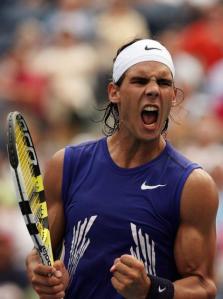
The first time I saw Rafael Nadal on television was December 3, 2004, when the unknown 18-year-old stunned world #2 Andy Roddick in 4 sets to lead Spain’s Davis Cup team past a flummoxed American squad. A casual fan glancing scorelines would’ve attributed the result to Roddick’s notorious record on clay. But those who watched knew. Across the net from Roddick, bedecked in sleeveless-and-capris, was a tornado of competitive grit and pasión the likes of which the sport, and perhaps sports in general, had never seen. The first point I ever saw of Nadal, he lobbed one of Roddick’s missile serves back in play and then shuffled to 10 feet behind the baseline, where he ran from side-to-side, refusing to secede what would, against anyone else, have been a 3-shot rally. After an exchange, Roddick lashed an inside-out forehand into the ad (left) corner and closed on the net. At that point almost 15 feet behind the baseline, Nadal sprinted top-speed, barely getting a racket on the ball, not just floating it back, like a human would do, but blasting it with his trademark top-spin in such a way that it looked like it was going wide-left but barely curled to catch the outside of the line, highlighting everything with a 360-degree fist-pump and yelling “Vamós!” To all of this, the immediate reaction was a deferential silence, our collective shock paying homage to a shot of the caliber tennis might never see again. Then a thunderous applause and closer examination of the artist.
The first thing we noticed were the biceps, bronzed and bulging, glistening with sweat. Then we saw the shoulder length hair outlining a snarling face, raring for the next rally. Who was this guy? Surely it was a gimmick. Certainly this level of intensity could not be sustained. There was something raw about him. Something at once Aboriginal, with his boomerang forehand, and Spartan, with his spear-like two-hander. The guy was more of a boxer than a tennis player, and when he was on court, it wasn’t tennis, it was battle. His essence was that of a man the Greeks might’ve honored with statues. We were watching Achilles.
Three points later, Nadal hit the exact same full-extension, running forehand, the ball barely clipping the line. Then he did it again. And again, quickly settling the debate about whether or not he was a gimmick. I’ve seen this shot hundreds of times by now and have grown numb to it in the same way society is tired of marveling at having put a man on the moon.
For such a masturbatory article, it’s only natural to spotlight the world’s most well-constructed left wrist. Among a plethora of endowments, it’s this carpus potentis, this muñeca poderosa, that roots the impossibility of what he does. Without it, he’d be Fernando Verdasco, another big, strong, left-handed Spaniard. It’s the flick of this hallowed joint that bases the most devastating shot in professional tennis, a top-spin forehand that has reached 5,000 and averages 3,200 revolutions per minute. For reference, Sampras and Agassi averaged around 1,800 rpm, which is considered high. It’s a shot just as functional as its helicopter follow-through is flashy. Top-spin is to tennis what a hedge is to an investor. It allows the actor to target more volatile, higher-potential opportunities without broaching recklessness. The effect of the surplus top-spin on Nadal’s forehand is that the ball rockets off the court and above the opponent’s shoulder. The action on the ball gives it weight; thus, the major conundrum a tennis player encounters is not one Nadal runs into: He doesn’t have to sacrifice power for precision, or visa versa.
The forehand, though the most potent arrow in his quiver, is not his most supernatural one. That honor goes to the backhand overhead, which he hits as if it’s a forehand overhead. This shot is the credential that might confuse Professor X into bringing Nadal to his Westchester mansion along with Cyclops and Wolverine. Literally nobody else can do this. In fact, it shouldn’t be physically possible. To do it, he jumps, contorting so that his back is parallel to the net and his chest is facing the baseline. At the point of contact, his eyes are not watching the ball, yet the sacrosanct wrist flicks at exactly the right time, as if endowed with, in addition to strength, telekinetic capability. The result is a smash of the variety where its first contact is with the court just across the net, and the second is with the hand of a lucky individual sitting in the third row.
Nadal belongs to the special class of modern athletes who might be branded as ‘next-evolution,’ meaning that 30 years from now, when athletes are bound to be more athletic than they are today, Nadal would still be among the elite. Past such athletes are Michael Jordan and Muhammad Ali. Rafa’s contemporaries are LeBron James and Calvin Johnson. He is an Adonis among Adoni. He could have played any sport and been among the very best. In fact, Nadal’s athletic prowess has been so entrenched in tennis dogma that it’s referenced more to belittle than to opine. Detractors minimize his game as ‘hulking’ and ‘brutish’ to insinuate a lack of nuance. But such a neg only betrays blindness to the finer points of tennis on behalf of the utterer. Grueling physicality is what’s easiest to spot, but it’s the nuance that makes his game beautiful. It’s a game that accessorizes in ways that would make his sponsors at Armani drool.

The most obvious rebut to those pigeonholing him as power-sans-finesse is that in an era where most top players serve in the 130s, Rafa’s serve barely breaks 120 mph. Though he doesn’t serve big, he serves smart, employing an arsenal of lefty-slice body serves that handcuff opponents in the deuce court and not fucking around on break/game points—serving wide to the opponent’s backhand. His serve is broken at a rate of 15%, and he saves break-points-against at a clip of 64%.
Which brings me to my real jones for Rafa. Saving break points is much less of a tactical feat than a psychological one. Anyone can string together a few good shots when pressure is low. In the critical moments, only the toughest can reign in emotions and give the point a special focus such that he’s both playing within himself and raising his level, trusting the process rather than going-for-broke after a stunted exchange.
Even his opponents acknowledge Rafa as the toughest competitor on tour. This is a statement that’s difficult to dispute, as he has a winning record against everyone currently ranked in the top 32. The only person who has played him more than 10 times who boasts a winning record is Nikolay Davydenko (6-5), whose bald head has suspiciously lost in the round prior every time it looked as if Nadal might get a chance to even the score. The reason, I submit, that he’s so good on clay is that it’s the surface that most rewards the fiercer competitor, the slower pace and higher bounce inducing longer, more grueling rallies. The viewer experience of Nadal is the opposite of that of Federer. The Swiss is a Rolex, doing it with seemingly effortless refinement. Nadal is one of those clocks without casing, in which the turn of every cog is visible. He wows not with simplicity and ease but with the distance he’s willing to run and the duress he’s able to sustain.
The externality on sport of a man who never beats himself is entirely positive. When facing Nadal, a player knows he’ll be steamrolled if he cracks just a little bit. He knows Nadal doesn’t lull. In fact, on the rare occasion when he isn’t the best player on the court, such as in 2011 when Djokovic went on his tirade, Rafa fights even harder. The most vivid instance was the third set of the 2011 US Open. Djokovic had won the previous two sets, and Nadal was clearly out-classed. Somehow, though, he willed his game to a level it had never reached and thus willed the sport to a level it had never broached, as at that point, tennis had never been played at a higher caliber than Djokovic was straddling, and Nadal had inched above that mark. In the third set, he hit every backhand, which for the previous 9 months had been wobbly and uncertain, as hard as 188 pounds (so we’re told) transmitted through titanium alloy permits, fist-pumping and snarling after every line-clipping laser, winning the set 7-6. Djokovic was then forced, in the fourth set, to raise his game to an even more never-before-seen level to win the tournament.
Even though Rafa lost, the match illustrates the value of Nadal’s competitive grit to his greatest competitors. Without Rafa pushing them, nobody would’ve seen how good Djokovic and Federer truly are. The highest quality matches of these two legends’ careers have been against Rafa. For Federer it was Wimbledon 2008, and for Novak, it was the Australian Open in 2012, when he fought from down a break in the fifth to hoist the trophy.
Nadal’s impact on the overall level of the sport was evidenced by how conspicuous his absence was in 2012 and early 2013. Unfortunately, these long-term absences have been a mainstay throughout his 10 years on tour. Nobody wants to win the Comeback Player of the Year Award twice. His first hiatus piggy-backed his maiden French Open defeat to Robin Soderling in 2009. The second came in 2012, following a second-round Wimbledon loss to Lukas Rosol, who was at that point ranked 100 in the ATP world rankings. In both cases, the culprit was a shaky knee, screaming with agony at all the punishment it had endured. He’s human afterall. Instead of Achilles, we’ll call him Patellar.
Another injury is one of three things that might derail his assault on Federer’s record of 17 Grand Slams. The second is another 2011-like coup by Djokovic. The third is a doping scandal. A side-effect of a muscular physique, doping allegations have hounded Rafa since his career began. His accusers point to a few sketchy episodes. Some believe his absences weren’t injury-related, that perhaps it was the ATP’s way of silently punishing him for a positive test. The main instance accusers point to is Operation Puerto. In 2006, Spanish doctor Eufemio Fuentes was busted for running a massive doping ring linked to cycling, tennis, soccer, boxing, and track. In the sting, over 200 blood bags labeled with code names were collected. In 2012, against the wills of the World Anti-Doping Agency, the Italian doping authority, the Spanish doping authority, the International Tennis Federation, and even Dr. Fuentes himself, a Spanish judge opted to destroy all the evidence, an action prompting Andy Murray to tweet, “beyond a joke… biggest cover up in sports history?”
In fairness to Nadal, he, to our knowledge, has never failed a drug test, and, when he was out for 7 months in 2012 and early 2013, he was the subject of a record 7+ out of competition tests. That said, reasons for speculation about not just Nadal, but about the entire sport of tennis abound. Djokovic, for example, attributes his rise in 2011 to a gluten free diet. Tennis might be experiencing the same type of chronic doping that baseball saw in the 1990s and cycling saw in the early 2000s. This is exactly why the athletes will never get caught. Positive tests by Nadal and Djokovic would act as astroids extinguishing the sport’s global popularity. No sport depends on the likability of its ambassadors more than tennis does.
And aside from doping allegations, Nadal is very likable. It’s the quirks that charm us. Famously OCD, he can’t sit still in his chair on changeovers, jittering his legs like a 5 year old that needs to pee. There are a host of similarly juvenile superstitions that wholly clash with his gladiator persona. In the pregame sit-down he spends over 30 seconds pulling his socks up and down so they are exactly the same height. He’ll bring two water bottles, one slightly warmer than the other, to every match, stationing them meticulously next to his chair. Before serving, he’ll pick his shorts out of his butt and brush his hair behind his ears. While waiting for the pre-match coin toss, he’s bounding from one leg to another, and, after service is assigned, he sprints in a zig-zag to his baseline. Between points and after games, he never steps on lines, and, on changeovers, he’ll wait for his opponent to cross the net before he does.
There are other mannerisms, too, that are a little more overt, and, though some are annoying, they add to that sense of watching a 9 year old who was never forced to grow up. He, for example, takes an inappropriately long time before serving. The rule is 25 seconds between the end of a rally and the toss of a first serve. Nadal routinely exceeds this. When warned by the umpire, he gets irrationally angry, as if he did nothing wrong, and ends up winning the next three points before glaring at the ref while avoiding stepping on the lines as he walks to his chair. Other examples of Nadal’s seemingly innocent graying of rules are his tribulations with in-game coaching. Before serving, he’ll look to his Uncle Toni for a signal on where to serve. After a close call, he’ll look to his coach for advice on whether or not to challenge. To be clear, in-game coaching is not permitted, yet somehow it’s accepted that Rafa receives it, a tidbit that is both adorable and gives credence to those who promote steroid-theory.
These self-entitled ticks disappear after the match. He is shy with the media and overwhelmingly gracious to opponents. After suffering a hamstring injury in the 2011 Australian Open and subsequently losing to David Ferrer, he refused to chalk up the loss to injury, even though it was clearly the only explanation for the result. In the trophy ceremony after the 2009 Australian Open Final, the best match Rafa has ever played, where he beat Federer in a 5 set thriller, he at the same time paid respect to Federer as the greatest ever and apologized for beating him. And he didn’t see the irony. In fact, he hates when supporters hail him as the greatest ever, so, out of respect to Rafa, I won’t make the case. (If you’re interested, it was made here by Andre Agassi, and again here, by roaming20s).
Nadal the tennis player can be most succinctly described as Uncle Toni’s masterpiece. He isn’t just a product of his uncle’s coaching, he’s his uncle’s robot. Rafa’s unquestioning respect of his uncle’s authority is comparable to that of a Nazi to Hitler. Luckily for Rafa, his uncle hasn’t misled him. In his nephew, Uncle Toni created a tennis game analogous to a Picasso painting. Something seemingly disjointed, deviating from the norm in a way that’s better. The most galling of Uncle Toni’s experiments was putting a racket in his left hand even though Rafa was born right-handed. Left-handedness is an advantage in tennis, as lefties serve wide to the ad court. The double-handed backhand on his dominant side also allows him flick the ball cross-court even when it’s behind his natural strike-zone.
Writing a person off as someone else’s minion is, in most circumstances, insulting. About a soldier, however, there’s no greater compliment. Perhaps what allows Rafa to remain so tough in big moments is that the internal dialogue is non-existent. He’s outsourced all decision-making and is simply doing what he’s been programmed to do. Perhaps his biggest advantage has been an ability to disregard ego.
He does this with his business decisions as well. His dad tells him which sponsorships to take and which advertisements to do. In these endeavors he’s been very successful, at least financially. This website estimates he made $21 million last year just from sponsors. However, his branding taints him a bit. It tested my loyalty as a fan when he published a mid-career, ghost-written autobiography. The 250 blandest pages I’ve ever read, the main point was that even though he’s a celebrity, he isn’t the celebrity type. There wasn’t an authentic sentence in the entire thing. The day after reading it, the ATP World Tour website had a feature about him teaming up with Bar Rafaeli in mixed doubles at a fundraising event. A couple of weeks later, I stumbled upon a Shakira music video with Nadal prominently featured. I felt like a chump. The only reason for that book’s existence was to take advantage of his most loyal fans’ desire to believe in him.

The fact is, the book sold, he made money, and I can’t fault him for capitalizing on his celebrity. I learned a valuable lesson: never read athlete memoirs. Even though I didn’t learn much about his internal philosophy, I learned how his advisers have chosen to brand him. More than anything, they’d like us to see a family man, someone who’s unassuming and comes back home to Mallorca, where none of his childhood friends acknowledge his global celebrity. While the bit about his friends ignoring his status seems far-fetched, I really do believe he’s a family man. The only non-injury related setback to his career came when his parents divorced. He’s kept his uncle as his coach. His parents, sister, and girlfriend travel with him to every tournament, the awkward part of the arrangement being his sister might be more attractive than his girlfriend. And at major tournaments, such as Wimbledon, he stays in big houses for groups of 9 or 10.
From what I can glean of his non brand-enhanced personality, he loves Spain, he loves soccer, and he loves Spanish soccer. Every month or so he’ll be photographed with Spanish royalty. When Spain won the World Cup, he went down to South Africa to party with his buddy Iker Casillas, goalie for the Spanish national team. A good three-quarters of his Facebook activity involves him playing video games with other Spanish celebrities. It seems to me, that, contrary to what his book says, he loves everything about the celebrity lifestyle except for the fact that the media controls his narrative. In a perfect world, he’d be making all the money the ads bring in and hanging out with Spanish royalty and sports stars without having to talk to journalists. I don’t knock him for that. I just wish he’d said it in his book instead of treating his fans like idiots.
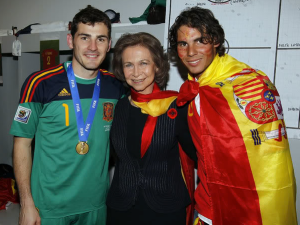
Sometimes, I admit, I get so fed up with Nadal’s branding that I break up with him. I vow to cheer for Murray in the next tournament. Murray is a good choice because he’s the best player who isn’t Federer or Djokovic. Unfortunately, love is chemical, not logical. The moment I see Rafa grunting and snarling on court, I’m reminded of the 18 year old dripping with pasión, curling a forehand past an outstretched Andy Roddick, fist-pumping for Spanish glory. When he hits a backhand overhead as if it’s a forehand overhead, I can’t help but marvel at the world’s most well-constructed left wrist. After a few rallies, I apologize to Murray for having teased him and sheepishly retreat to the Nadal camp.
So beyond felatio, what was the point of all this?
Love, I’ve heard, is an addiction. The same brain regions light up for someone in the midst of deep romance as for someone addicted to cocaine. Both cocaine and romance trigger a dopamine surge. When accustomed to this instrument of dopamine release, if a person goes without it for an extended period of time, he becomes depressed, aching for nothing but that one thing that sets him free.
In the same way, a sports fan can grow attached to a certain player. Not to the person, but to the way the person plays a game. Rafael Nadal’s top-spin forehand, backhand overhead, and general mental fortitude have instrumented so many dopamine surges, so many moments of euphoria, that I can forgive him for almost anything. I can forgive his likely doping. I can forgive childish entitlements, like receiving in-game coaching. I can forgive having been victimized by one of the most ceramic branding campaigns in sports. I can forgive all of that because what really matters to a tennis fan is the game, and Rafael Nadal’s tennis game is something in which I have seen and recognized beauty for a sustained period of time.
So the point of this article, as with felatio, is that all anyone wants is a thrill, and, when one has been delivered, it’s nice to acknowledge it.
 Work ethic is not what kept MJ from reaching the majors. Talent wasn’t the problem either. It was repetitions; while he’d shot a million free throws over the previous twelve years, his counterparts had taken a million swings.
Work ethic is not what kept MJ from reaching the majors. Talent wasn’t the problem either. It was repetitions; while he’d shot a million free throws over the previous twelve years, his counterparts had taken a million swings. There are infinite ways in which people derive joy, each of which has a unique flavor. The more hobbies one learns, the more experience one has on the forms pleasure might take. The wider one’s net of pursuits, the more people with whom one might connect. The more activities one tries, the more one understands and develops one’s strengths, weaknesses, and ability to learn. And the more pleasures a person knows, the more fulfilling endeavors one might share with and teach one’s loved ones.
There are infinite ways in which people derive joy, each of which has a unique flavor. The more hobbies one learns, the more experience one has on the forms pleasure might take. The wider one’s net of pursuits, the more people with whom one might connect. The more activities one tries, the more one understands and develops one’s strengths, weaknesses, and ability to learn. And the more pleasures a person knows, the more fulfilling endeavors one might share with and teach one’s loved ones.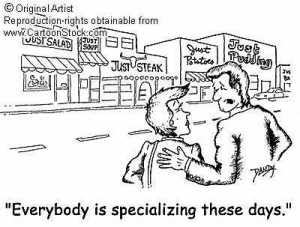 While unpleasant and, from a competitive standpoint, my worst leg, after completing triathlons I have been proudest of my swim performance because building my swimming ability has taken the most work. Capitalism tells people to do what they’re best at relative to others. What comes easy, however, isn’t always what people find fulfilling. When the goal is accomplished, that awareness of all those little steps makes that end result feel great even if it only takes a more talented person one step to travel the same distance.
While unpleasant and, from a competitive standpoint, my worst leg, after completing triathlons I have been proudest of my swim performance because building my swimming ability has taken the most work. Capitalism tells people to do what they’re best at relative to others. What comes easy, however, isn’t always what people find fulfilling. When the goal is accomplished, that awareness of all those little steps makes that end result feel great even if it only takes a more talented person one step to travel the same distance.










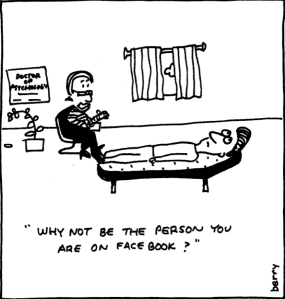


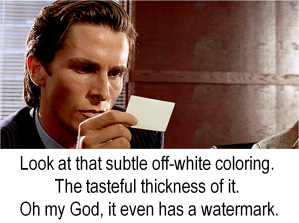
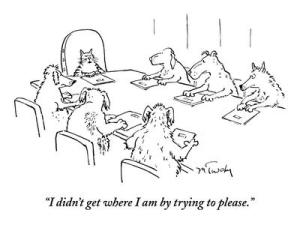
 There had already been mussels and wine, overcast skies above the Seine photographed with pleasure, crepes on the barge Daphne, a sweaty jet-lagged nap in the tiny apartment, easy use of the rail from the airport. July’s Paris keeps sunlight well into evening, and by twilight I had been from Charles de Gaulle to 10, 4, 1, 2 and 6 with leisure. Quenching my thirst for Paris became more effortless as the day lengthened.
There had already been mussels and wine, overcast skies above the Seine photographed with pleasure, crepes on the barge Daphne, a sweaty jet-lagged nap in the tiny apartment, easy use of the rail from the airport. July’s Paris keeps sunlight well into evening, and by twilight I had been from Charles de Gaulle to 10, 4, 1, 2 and 6 with leisure. Quenching my thirst for Paris became more effortless as the day lengthened. But he was inside the store with me. He was around the corner; he was next to me. Even as his eyes settled, unchanging and satisfied, there was an incongruous thrill in his body. He advanced minutely in posture with every shift I made. In the intimacy of the bodega he could have touched me with just a small hand gesture. But his limbs hung; any brush against me would emanate from his torso, pelvis, thighs. It was deranged, the closeness with which he followed me around the shelves in the store. We could have been slow dancing. I paid for the wine without saying a word, my horrible French concealed along with my growing concern. My thoughts were no longer on frustrated expectations of safety. Now I was baffled by the simultaneous irony and gravity of becoming the victim such a formulaic event.
But he was inside the store with me. He was around the corner; he was next to me. Even as his eyes settled, unchanging and satisfied, there was an incongruous thrill in his body. He advanced minutely in posture with every shift I made. In the intimacy of the bodega he could have touched me with just a small hand gesture. But his limbs hung; any brush against me would emanate from his torso, pelvis, thighs. It was deranged, the closeness with which he followed me around the shelves in the store. We could have been slow dancing. I paid for the wine without saying a word, my horrible French concealed along with my growing concern. My thoughts were no longer on frustrated expectations of safety. Now I was baffled by the simultaneous irony and gravity of becoming the victim such a formulaic event. Confrontation is risky, but I had run out of sunlight and I was done drawing him ever closer to my door. Twice I confronted him, saw him absorbed by the streets, only to have him reappear. Never ruffled, only hot with hostility, I asserted myself a third time and bought the minute to slip swiftly into the gated alleyway containing my rented apartment.
Confrontation is risky, but I had run out of sunlight and I was done drawing him ever closer to my door. Twice I confronted him, saw him absorbed by the streets, only to have him reappear. Never ruffled, only hot with hostility, I asserted myself a third time and bought the minute to slip swiftly into the gated alleyway containing my rented apartment.



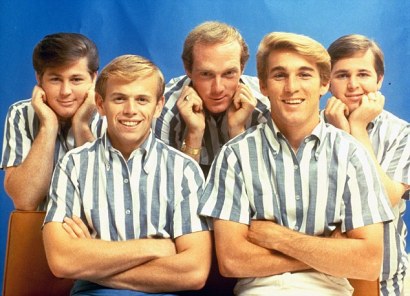



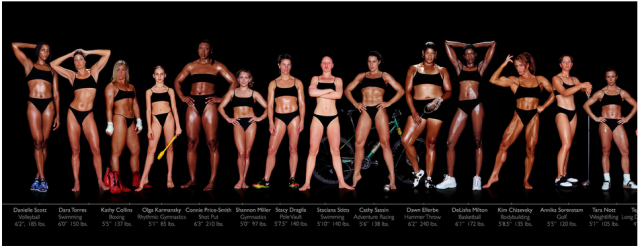

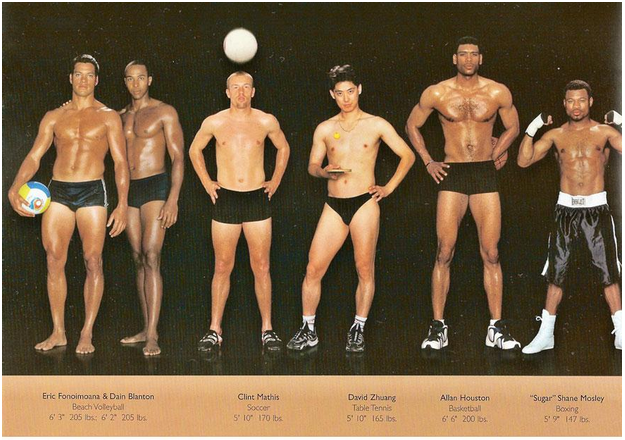




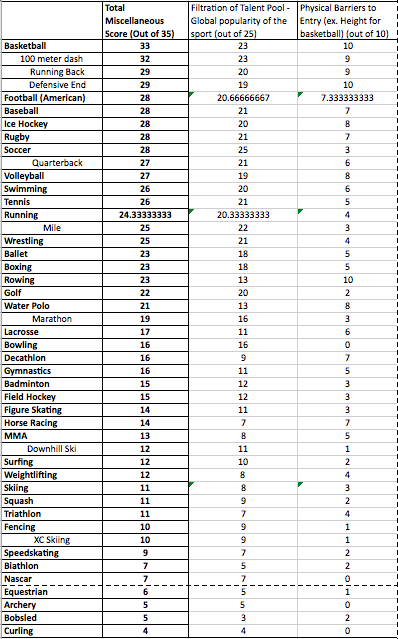
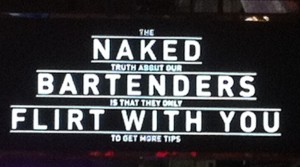
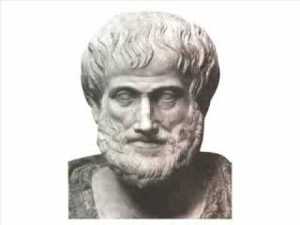
 tive play, it seems, is to concede to social norms. Is to become de, as it were, lewded. Use that money spent on the plane ticket to the Philippines to buy a nice shirt and a well-fitting pair of slacks, date someone who also watched
tive play, it seems, is to concede to social norms. Is to become de, as it were, lewded. Use that money spent on the plane ticket to the Philippines to buy a nice shirt and a well-fitting pair of slacks, date someone who also watched 